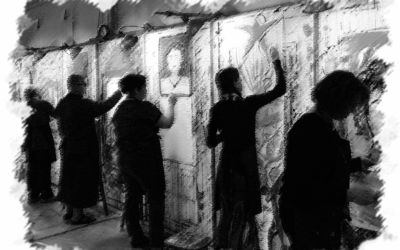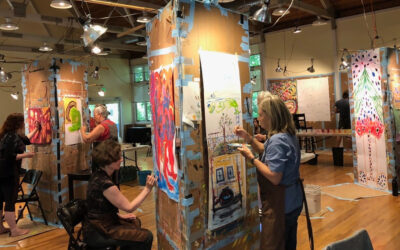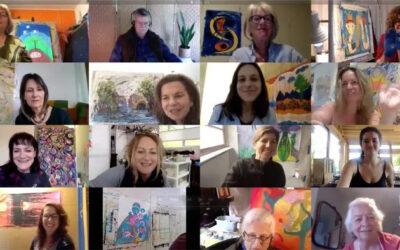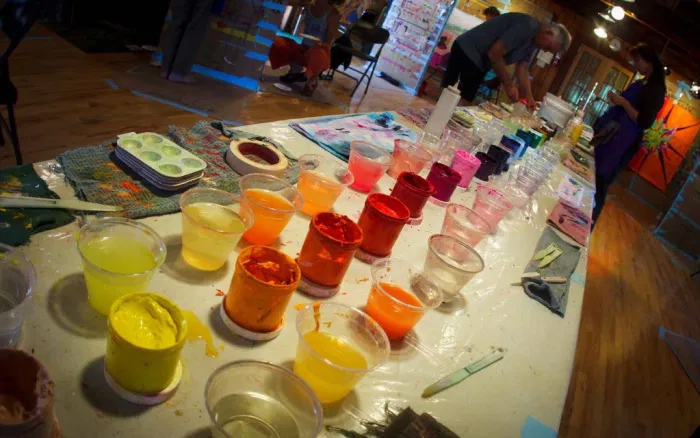
Don’t let art supplies intimidate you. When it comes to process painting, brushes, paints, and paper are the easiest tools to use — they do not require sophisticated techniques or special knowledge. Your desire to paint is what is important, and brushes, paints, and paper are a means to fulfill that desire, not an obstacle.
Find a Space
Don’t think that you have to remodel your house or build a new studio before you can paint. Use what you have and arrange a simple and practical painting space, keeping setup to a minimum.
Find a private wall space where you can pin up a piece of paper. A wall works as well as an easel — you can cover it with soft fiberboard for gripping tacks, or a piece of cardboard to which you can tape your paper. Even the back of a door can be enough to get started. Get a clip-on lamp to light the paper, and a small table or shelf to hold your paints and brushes. Protect the floor with a carpet remnant or a piece of plastic. Most painting settings can be arranged with just the resources you have around the house. The point is, if you make it simple, you will be more likely to do it. Painting on an easel or wall has the advantage of keeping you standing while you work. Energy flow and aliveness tend to be greater when you’re on your feet.
Make the Time
You can paint any time. Sometimes just fifteen minutes will begin the process, and then you will want to continue. Or you might find the time when you first get up in the morning, before your day has begun. Experiment with different times to paint, and remember that you don’t have to be in a special state to paint. You could paint just as you are feeling right now, without preparing yourself. The important thing is to get started; the rest will take care of itself.
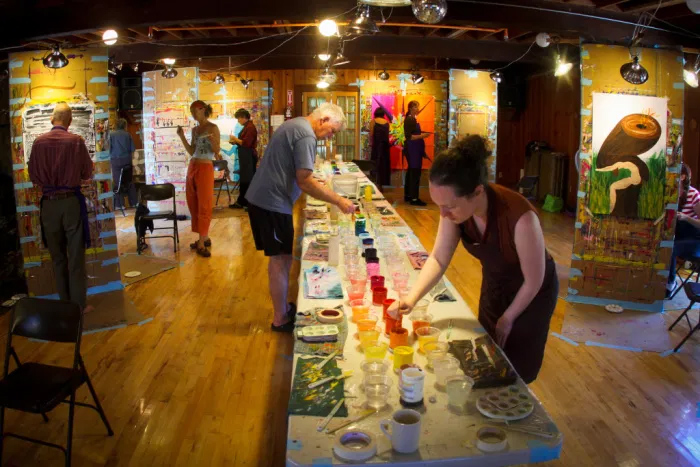
Gather Your Materials
Process painting does not depend on particular materials or tools. Any materials will work when used in the right spirit. Some materials require more care and maintenance and will take more time to prepare and apply. The materials listed below are found in art supply stores and lend themselves well to painting for process. The essential thing is that the materials adapt easily to the needs of your inner process, rather than requiring you to adapt to the demands of the materials.
Paints
We recommend high-quality liquid tempera paints. They are water based, nontoxic, easy to use, and readily available. They make an opaque, bright color, dry quickly, and are relatively inexpensive. Acrylics, oil paints, and watercolors are more difficult to use. Gouache is high-quality paint similar to and more costly than liquid tempera. If you can afford it, it’s an excellent medium for this process.
Do not paint directly out of the original paint containers. The water from your brush will eventually cause the paints to mildew. A good trick is to transfer some colors from their jars to a plastic ice cube tray, small Tupperware containers, or other containers that can be covered. When you have the urge to paint, uncover your containers and you’re ready to go. Moisten the colors with a few drops of water before storing them. You will need a couple of jars of water to rinse your brushes between colors as you paint. Have some paper towels and a damp rag nearby to catch drips and to dry or clean your brushes.
See our Paints page for more information about where to find good liquid tempera paints and how to mix the custom colors we use in our workshops.
Brushes
A good brush will respond as if it were an extension of your hand. Investing in a few high-quality brushes will reward you may times over in the kind of painting experience you will have. The best brushes for this type of work are made in France and can be found in many art stores. The teardrop-shaped brush is very practical because it holds a lot of paint and water, and can make fine or broad strokes. Excellent brushes for tempera or gouache are made of squirrel hair. Two or three brushes of various sizes are all you need.
It is also good to have a few inexpensive, flat, hard brushes for those times when you need to use more pressure and do not want to be careful with soft brushes.
Check out our Brushes page to find out more about brushes or to order the brushes we use in our workshops.
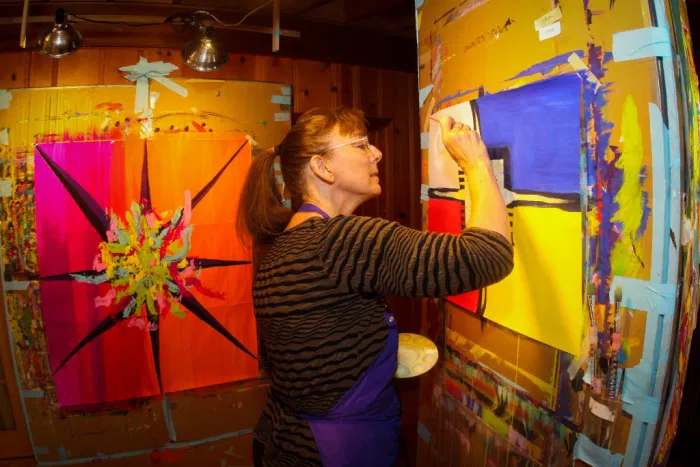
Paper
Vellum Bristol paper is usually sold in art stores as well as by printing-supply distributors. It is often found in pad form in smaller sizes. It is used as a book printing paper and can also be bought in bulk from paper supply companies. It is absorbent enough for liquid tempera, yet distorts very little with the application of water. The 26” x 20” size is a good one to start with. Other types of watercolor paper will work with tempera paint as well.
Inexpensive paper allows you to focus on the act of creating and not worry about wasting materials. Painting on canvas can make the outcome more precious, limiting your ability to experiment freely.
See our Paper page to find out how to order the paper we use in our workshops.
Alternatives
Colored pencils, crayons, and felt-tipped or ballpoint writing pens work quite well in more limited circumstances, such as when you are traveling. With a few pens and a sketch pad, you can create anywhere.
Learn More
This article is adapted from the book Life, Paint and Passion: Reclaiming the Magic of Spontaneous Expression, co-authored by Stewart Cubley.
To find out about upcoming process painting workshops and retreats, see our Programs.
Thanks to photographer Peter Paul Rubens for the photos in this post. You can find more great work on his website.

